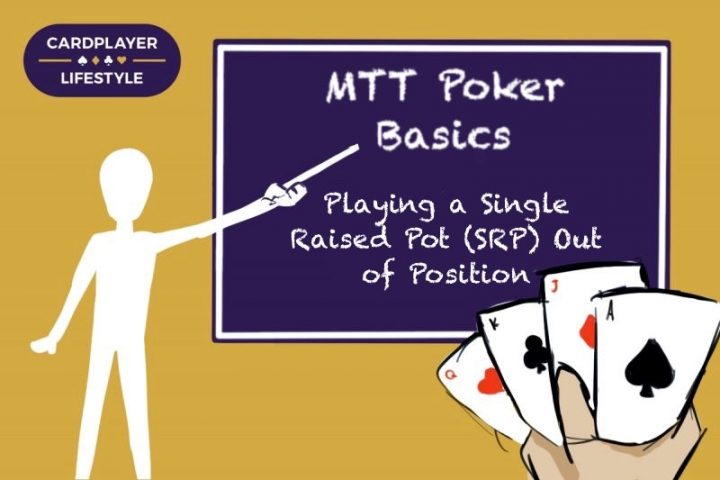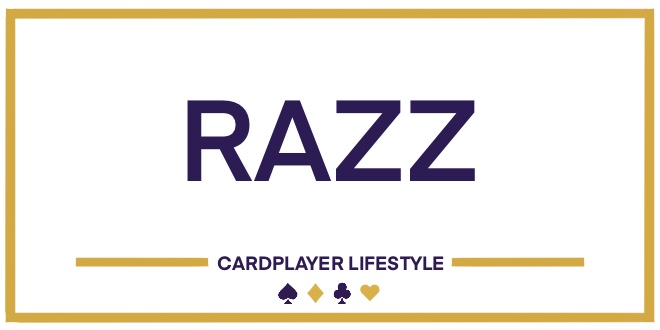Ed. note: This is the sixth in a series of articles designed to help recreational tournament poker players build their hobby into a profitable endeavor.
In poker, there is so much that we can’t control. It’s been a consistent theme throughout this series, and it is one we must revisit here. When you raise a hand from an early position, players should respect your range but can still profitably call plenty of hands. As usual, there are ways to bring order to the chaos.
Our hand selection from certain positions at the table is one thing we can master, bringing consistency to a game full of unique variables. As referenced back in the first MTT Poker Basics article on opening ranges, this part of the game is crucial. Before you start thinking about check-raises, floating out of position, and other nuanced counters, you will need to clean up hand selection. Making preflop second nature will help you understand your opponent’s range when you go heads up postflop.
You need that leg up you can in these pots because playing out of position can be difficult. Sometimes you will need to recognize the need to fast play value hands, others you will need to carefully navigate to showdown. Staying balanced between the actions can be a thin line to walk. And it can be even more difficult to remember throughout the highs and lows of variance in tournament poker.
With proper fundamentals, you will find your win rate improving substantially in this common scenario. Let’s dive in by recognizing what we know from preflop: our opponent’s flat calling range.

Position is key
As you know by now, playing out of position immediately places you at a disadvantage postflop. Giving your opponent the chance to see how you react to any given flop offers them information about your holding you can’t get about theirs. Your best counter to this is understanding what boards you will have an advantage on and where your disadvantages are.
The position from which an opponent has flat called your early position raise can paint a unique picture of their calling range. For example, at 60 big blinds effective, let’s imagine you have decided to raise from under the gun (UTG) at an 8-handed table.
If either UTG1, the opponent to your immediate left, decides to flat call your raise, take notice. For any competent player, this should be a fairly strong range consisting of pairs and the best suited Broadway combos. Sure, you’re less likely to see players slowplay AA or KK in this scenario. But expect to see balanced players flatting monsters like JJ, QQ, AKo at a high frequency. In theory, your opponent should be calling less than 10% of hands vs your open. Flatting with so many others left to close the action should scream strength.
A late position player like the Button calling a raise vs early position is a different story. By ensuring they will play postflop in position, the BTN is flatting medium suited Kx, middling suited connectors and two gappers, along with all those strong hands from before. Playability is still on the table for this villain, as they can call nearly 20% of hands.
Recognizing how an opponent’s position impacts the hands they call can go a long way toward reading the action postflop. For a quick refresher on preflop strategy in tournaments, I recommend checking out this Jonathan Little video for PokerCoaching.com below.
Playing defense out of position
Walking the line cautiously and understanding your hand strength is the name of the game in single raised pots out of position. Certain boards will be uncomfortable, others you will be rushing to get the money in. But you may be surprised how often you should be floating vs opponent flop bets with even a smidge of high card, backdoor equity.
Take a board like T-hi rainbow board with the Ten of spades, 6 of hearts, and 2 of clubs (Ts6h2s, or T62rb). Our opponent should not have a load of Tx hands in their range from this position, as they should have folded all of the unsuited variety preflop. Since they only call the best suited combos, they need to start bluffing with K/Q-hi hands that want folds from your strong Ax.
This is going to set you up to float small bets often. If you have a pair, you shouldn’t be going anywhere here. And that doesn’t just mean a ten, 6, or 2. If you have any pocket pair you need to stick it out for now. Even a relatively uncomfortable hand like AJs should rarely be folding. If your AJs has a suit on the flop, then it should be floating to pick up a flush draw on the turn. At some frequency, Ahi can be good, so it’s important to realize that equity when your hand has a path to improve on future streets. The only AJs you would fold here is AJ of diamonds, which has no backdoor flush draw, only naked overcards.
On the other hand, boards that connect well with Broadway ranges like JTx can turn the action aggressive quickly. Opening such a strong range, this type of board can be a breeding ground for check-raising out of position. By not being 3-bet preflop, you maintain a range advantage by still having sets and overpairs, which can make a lot of your opponent’s betting range miserable once check-raised.
For example, say your opponent has a holding as strong as AQo with two overs and a gut shot. If you check-raise their bet on this flop, they need to be folding more than half the time. Mixing in check-raises with your weaker draws like Q9s with a backdoor flush draw is an excellent way to push your range advantage. It also balances the raises you make with your value hands.
Navigating the disadvantage
Poker inherently leaves a lot out of the player’s control. That’s one of the first things people quickly understand when learning how to play poker. Naturally, playing out of position and at the mercy of your opponent’s bidding, is not ideal. Unfortunately, you will see this situation often, particularly at lower stakes. Players like to play hands and see flops.
When you are playing in a situation that is naturally disadvantageous for you, you simply won’t win easily. You should always aim to force your opponent into tricky spots, diminishing their positional advantage when you can. The best offense to this troubling situation is a good, balanced defense. Understand what properties make for good flop floats and stay aggressive with balanced check-raises, and you’ll find yourself doing much better than expected.





